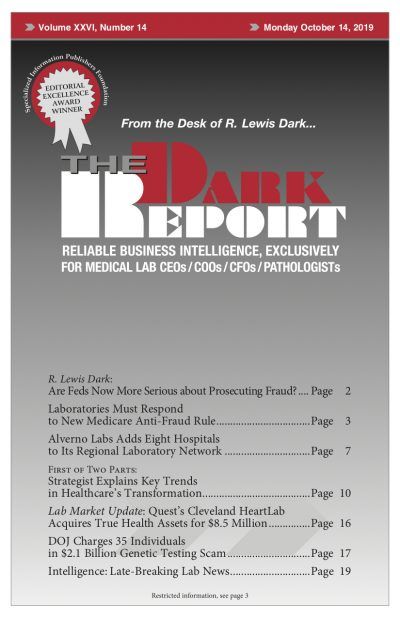CEO SUMMARY: For pathologists and clinical, molecular, and genetic testing labs, appropriate reuses of lab data can provide a new source of revenue. Labs that serve as preferred providers of diagnostic testing data can help health systems, ordering physicians, pharmaceutical companies, and other organizations when they reuse lab test data to support evidence-based care and …
How Labs Can Add Value for Providers, Insurers, Pharma Read More »
To access this post, you must purchase The Dark Report.


